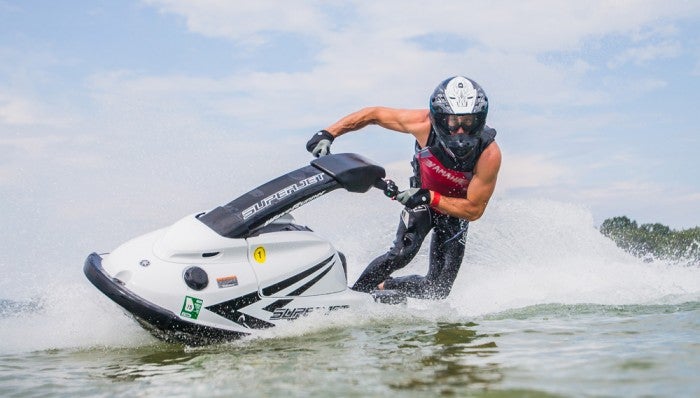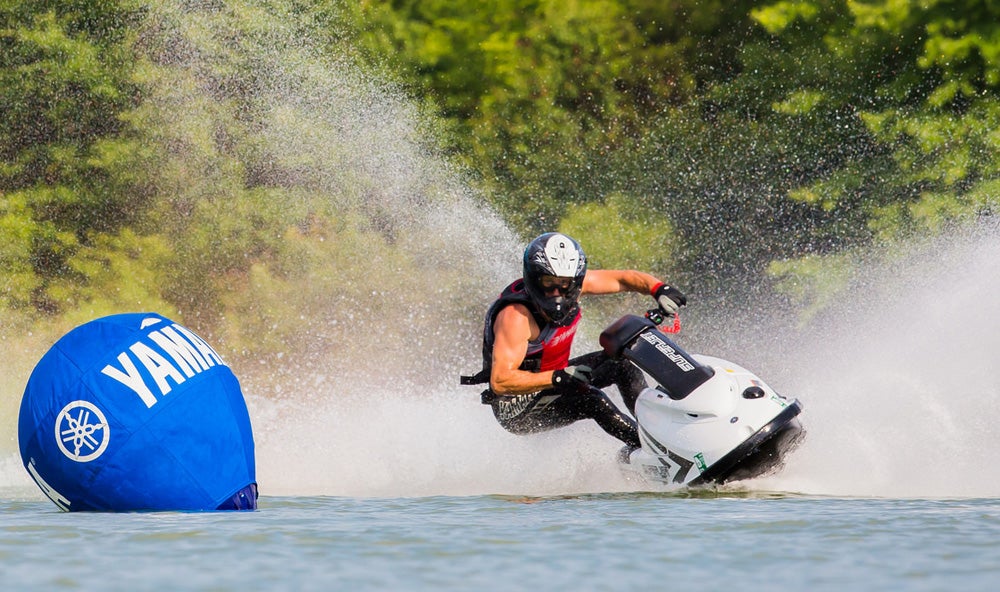2017 Yamaha SuperJet Review
The last of the two-stroke standups
Perhaps all the talk of the demise of the standup market has been premature. Kawasaki’s announcement of its return to the category has generated significant interest in these solo-passenger models once again. That announcement has also sparked some renewed interest in the Yamaha SuperJet, the standup craft that has remained on the market and returns once again for 2017.
Engine: 701cc Twin
Fuel Capacity: 4.8 gal.
Dry Weight: 306 lbs
MSRP: $8,499
Yes, technically the SuperJet is for “closed-course competition use only.” In essence, it’s due to the craft featuring a two-stroke engine, an engine that does not measure up to current emissions standards. Yet, Yamaha can still sell the craft. Technically you need a competition license to get one, but that’s something that’s easily done by any budding “racer” joining a race organization. Whether or not you can then register the craft and use it on a public waterway seems rather vague. Technically you would think the answer would be no, but there are people that continue to do it. Existing SuperJets can also continue to be used, as they are in effect “grandfathered in.”
So, technicalities and vague rules out of the way, let’s take a closer look.
Nimble, Agile Solo Ride
With the dimensions and power of the new Jet Ski released, it’s more apparent than ever that the SuperJet is the smaller, more nimble of the two standup models. That likely gives the SuperJet more appeal to those with a freestyle focus. Even compared to Kawasaki’s former standup model, the SuperJet is more compact. Length is about 7’ 4” and weight just a touch over 300 pounds. The boat’s turning style, once kind of weirdly flat in the craft’s early days, for years now has been one that rewards inside lean. It’s a style that has obviously been influenced by the aftermarket, with a wider body forward and slimmer dimensions toward the stern. Sharp hull chines bite into the water and assist the boat in its sharp handling. The pump is located as far aft as practical and the rideplate lengthened, further quickening the boat’s reflexes.
Paired with that nimble hull is a long-running, well-proven engine. Yamaha’s 701cc powerplant is legendary in PWC history. Featuring twin 38mm carburetors and linked to a 144mm jet pump, it pulls strongly out of the hole and retains that power throughout the powerband, particularly when you’re muscling your way out of a sharp turn or calling on a sudden burst of thrust to propel you into that next trick. Sure, top speed will suffer compared to the new four-stroke Kawasaki. A realistic expectation is only about 45 mph. But given the boat’s light weight and quick response, that’s surprisingly sufficient. Should you want more, aftermarket shops have had literally decades to produce bolt-on parts to fuel the performance fire.
From a rider’s perspective, the combination of handling, light weight and power ranks high in terms of fun factor. This is a craft that is truly affected by body weight, with the rider able to heavily influence the boat’s handling characteristics. You feel like you can jump it out of the water, soar it off an ocean wave, or drop your hip or drag a leg to power through a crisp slalom turn. Features are minimal but those that exist enhance that control. A kicktail at the back of the tray provides leverage. The spring-loaded handlepole won’t weigh on your lower back and arms. Hydro-Turf mats in the footwells and sides of the tray are grippy yet comfortable and absorb a little rough-water pounding.
Back in Black
Don’t expect any real updates for ’17. A sole color option, Pure White with Black, remains from the two color choices introduced last year. it’s also a given that questions will arise about how long the craft will remain, and whether Yamaha, like Kawasaki, will jump on the four-stroke bandwagon.
For now, however, the SuperJet remains a viable alternative, even if it is often overlooked…and viable for a limited audience. In many ways, the SuperJet has now even become more appealing for its size and handling ability, which is now more clearly separated from that of Kawasaki’s alternative.
Think you’re not the standup type? You may want to give one a try. There’s no more athletic ride out there. And besides, if they were easy, anybody could do it.
Get PersonalWatercraft.com in your Inbox!
Like PersonalWatercraft.com on Facebook
Comments
Most Popular

2025 Yamaha JetBlaster PRO 2-Up Review

2024 Kawasaki Jet Ski STX 160X Review

Remembering the Sea-Doo XP

Whatever Happened to the Wetbike?

2025 Yamaha JetBlaster Review


















 Your Privacy Choices
Your Privacy Choices